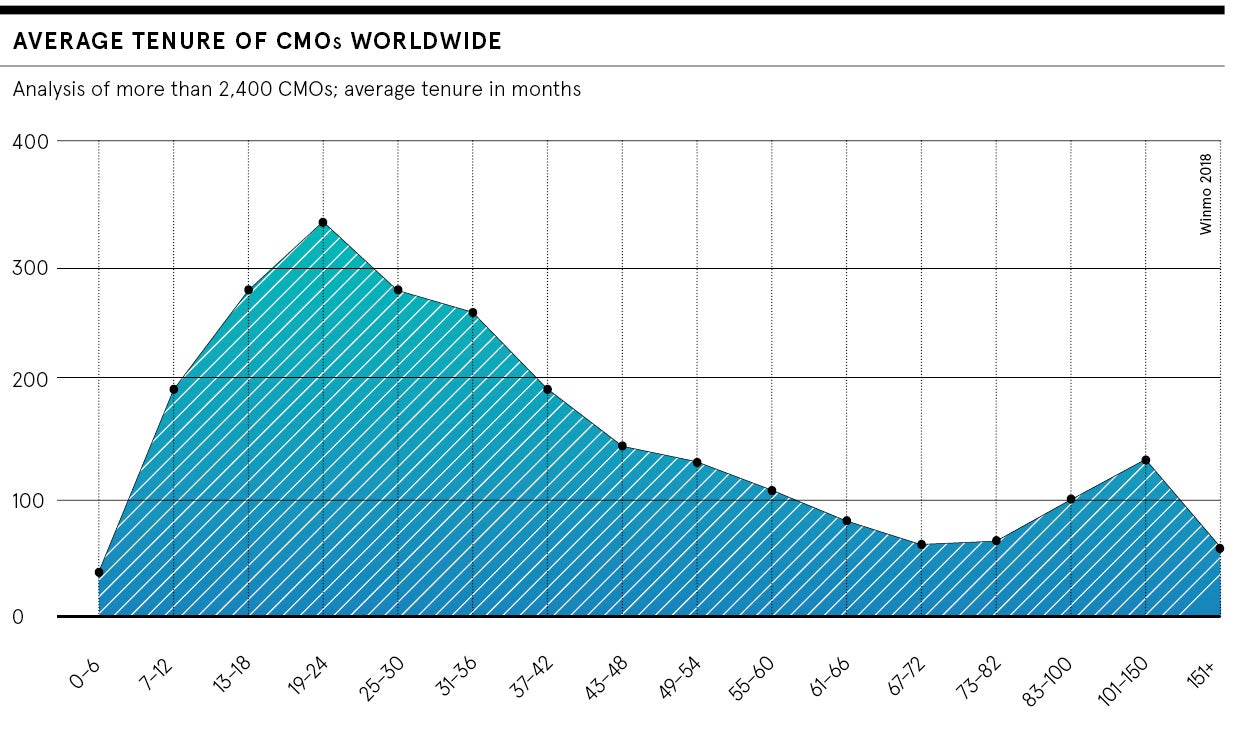The remit of the chief marketing officer (CMO) has changed. “It’s moved from very much an advertising and communications role to one of the key leaders in driving growth of the business and the brand,” says Joe Tripodi, who retired in January after a 40-year marketing career which included the position of CMO at both Coca-Cola and, most recently, Subway.
You do not need to be an expert in data science, analytics or programming to be a successful CMO. The thoughtful CMO of today will surround themselves with functional experts
With greater emphasis on data and analytics to drive enhanced segmentation and targeting, and the demand for ever-greater customer centricity, the scope of the role continues to widen, and the list of required skills grows. Indeed, according to research by Winmo in December 2018, the average tenure of a CMO is 3.5 years, half the duration of that of a chief executive. Are the current breed of CMOs up to the job?
Why CMOs must be obsessed with customer experience
Ben Bilboul, chief executive of Karmarama, part of Accenture Interactive, says marketers have the opportunity to apply their skills to a new set of opportunities, including new channels, platforms and data insights, and a greater ability to demonstrate growth to the business. He says: “We can choose to ignore these opportunities and be relegated to the communications department or take a more central role as business recognises the increasing importance of delivering the best possible customer experiences.”
Today’s CMO is much more involved in the customer experience, which is key to the customer-obsessed culture demanded of successful brands. The need to put the customer at the heart of the business strategy, coupled with a greater responsibility to drive growth, means the CMO must have significant strategic input.
As Mr Tripodi says, being able to disseminate wisdom, learning and knowledge to the wider company faster than a competitor can significantly impact results and facilitate becoming a learning organisation. “The CMO needs to cultivate and manage these networks of continuous learning and provide the strategic leadership and operational flexibility for the brand and business to thrive and grow,” he says.
Empowering the CMO to make a big impact
When it comes to strategic decision-making, Gareth Jones, CMO at eBay UK, says a common challenge is to “avoid relegation into purely tactical areas”, especially as performance data gets more forensic, and to resist the temptation to manage what you measure. He says: “A key leadership trait is to keep your head up.”
Balancing short-term focus with long-term planning means breaking down internal silos to ensure a seamless end-to-end customer experience. Mr Jones says that navigating this successfully, especially in large, complex organisations, “requires strong partnerships across finance, trading and merchandising, operations and customer service”.
But a greater strategic focus also relies on the C-suite empowering CMOs to make a wider impact. Indeed, inhibiting a CMO’s autonomy can contribute to the position’s notoriously short tenures. As Mr Bilboul says: “Churn tends to happen when the C-suite hires someone they think will drive growth, but only empowers them to produce communications.”
It makes sense that the people who best understand the consumer should be given a greater remit and CMOs must make their voices heard.
Mr Tripodi says that when he was CMO at Coca-Cola, the chief executive allowed the marketing team to launch the Share a Coke global initiative, which saw the Coca-Cola name on bottles replaced with first or Christian names. “This was a dramatic and bold initiative by Coca-Cola that ended up being one of its most successful promotions ever executed by the company,” he says. “Sometimes change can come from the CEO giving the CMO ‘air cover’ to drive bolder initiatives and take greater risks.”
The perfect balancing act of data and creativity
While today’s CMO must unquestioningly be data-driven too, with figures about everything from customer behaviour to marketing return on investment at their fingertips, it shouldn’t be at the expense of creativity. Mr Jones says that while “data is the glue”, which enables eBay to increase sales through its brand activity, and brand better across its selling and direct response investments, the importance of brands “telling interesting stories and getting noticed” remains critical.
Balancing creativity with analytical thinking is achievable. As Mr Tripodi says: “You do not need to be an expert in data science, analytics or programming to be a successful CMO. The thoughtful CMO of today will surround themselves with functional experts.”
It is about having enough knowledge to know the right questions to ask and about investing in, not just your own ongoing learning, but that of your team. “Understand where the puck is going, not where it is today,” Mr Tripodi concludes.
Why CMOs must be obsessed with customer experience
Empowering the CMO to make a big impact

